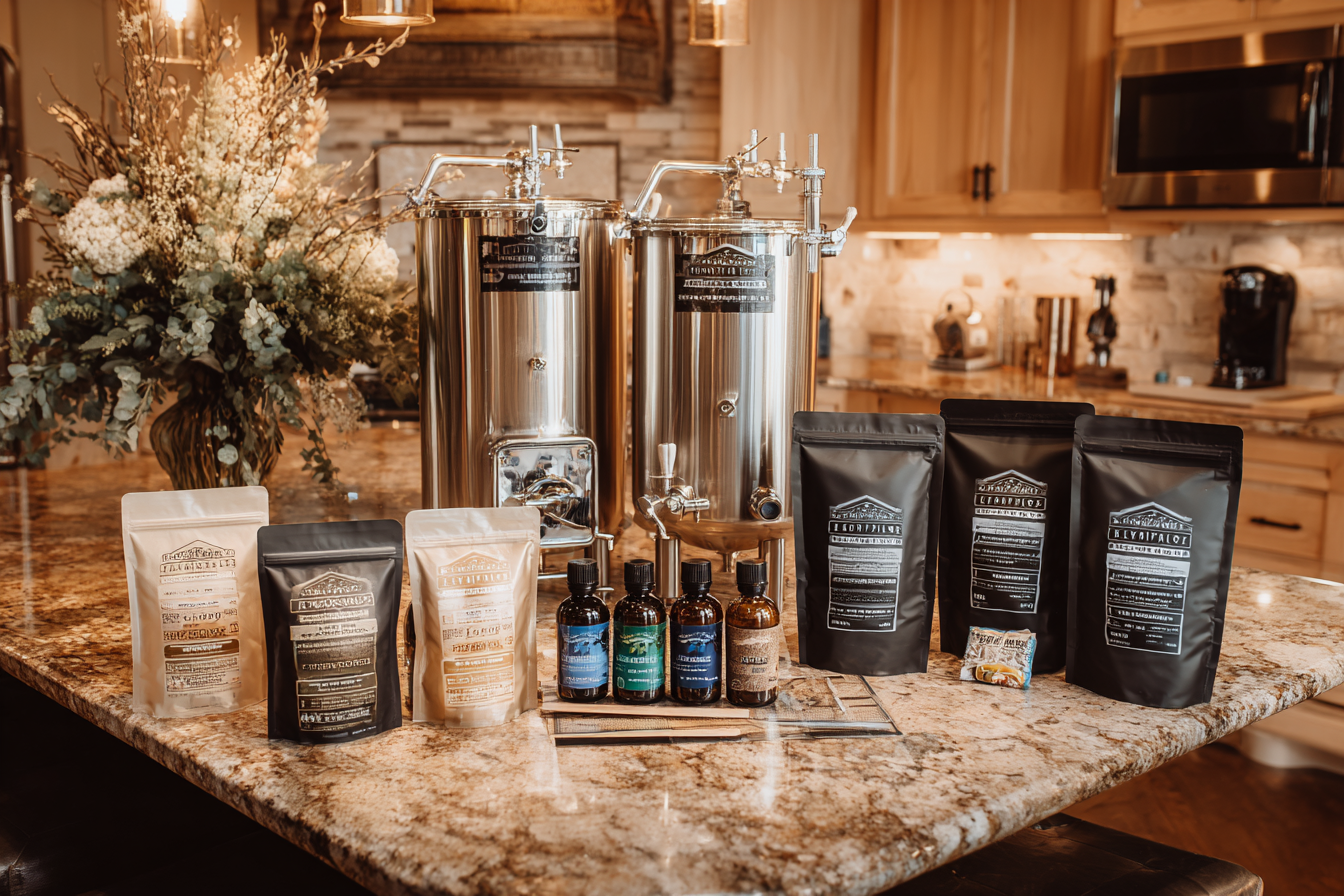Brewing Brett beer at home is a rewarding adventure for any craft beer enthusiast looking to push the boundaries of traditional fermentation. Brettanomyces, often affectionately called “Brett,” adds a complex layer of wild, funky, and tangy flavors that can transform your beer into an extraordinary and unique drinking experience. However, homebrewing with Brettanomyces requires specific techniques, patience, and attention to detail to nail the signature character of these wild yeasts. Whether you’re a seasoned homebrewer or a curious beginner, these tips will help you confidently take on the challenge of crafting your own Brett beer.
Selecting the Right Yeast and Ingredients
One of the first and most critical steps in homebrewing Brett beer is choosing the right strain of Brettanomyces and the supporting ingredients that will complement its distinctive flavors. There are several Brett strains available, each imparting unique traits: some lean towards fruity and tropical notes, while others emphasize earthy, barnyard funk or tart acidity.
When picking yeast, either pure Brett strains or blends that include Saccharomyces and Brettanomyces together are popular. Pure Brett fermentations tend to take longer and develop more complex funk, while mixed cultures can ferment faster and balance Brett’s wild character with more traditional brew flavors.
In addition to yeast, your malt bill and hop selection influence the final beer profile:
- Malt Choice: Lighter malts such as pilsner or pale malt provide a clean base highlighting Brett’s flavor, but caramel or darker malts can add complexity and sweetness to balance intense funk.
- Hops: Use hops that complement Brett’s character, often those with fruity or earthy hops work best. Be cautious with highly aggressive or resin-heavy hops so as not to mask the Brett flavors.
- Adjuncts and Additives: Many brewers incorporate fruit, oak chips, or spices during aging to enhance Brett’s complexity.
Preparing Your Brewing Environment
An optimal brewing environment is vital when working with Brettanomyces since these wild yeasts can be more sensitive and slower to ferment compared to typical ale yeasts. Ensuring sanitary conditions while allowing ample oxygen exposure during early stages sets the stage for success.
Key environmental considerations include:
- Cleanliness: Make sure all your equipment is thoroughly cleaned and sanitized to prevent unwanted bacterial contamination that could spoil your beer.
- Temperature Control: Brett thrives in moderate temperatures, typically 68-78°F (20-25°C). Maintaining a stable temperature promotes healthy yeast activity and consistent flavor development.
- Oxygen Exposure: Brett benefits from initial oxygen during early fermentation but avoid excessive oxygen contact later to reduce off-flavors.
Managing Fermentation with Brettanomyces
Unlike standard Saccharomyces yeast, Brettanomyces ferments more slowly and can continue fermenting for months or even years. Managing this lengthy fermentation period requires a strategic approach:
- Pitching Rate: Brett typically requires a higher pitching rate than traditional yeast strains due to slower growth. Many brewers start with a healthy yeast starter to ensure vigorous fermentation.
- Fermentation Duration: Be prepared for a long fermentation — Brett beers sometimes need 3 months or more to reach desired attenuation and flavor complexity.
- Monitoring: Regularly check gravity and taste samples to understand fermentation progress and flavor development.
- Secondary Fermentation: Moving beer to a secondary fermenter after primary fermentation can help clarify the beer and provide room for Brett to continue conditioning.
Patience: Aging Considerations for Brett Beer
Patience is the hallmark of successful Brett beer brewing. The complex funk and tartness only develop over extended aging periods. Here are some aging considerations to keep in mind:
- Time Frame: Depending on the strain and desired flavor, aging can range from several months to over a year.
- Container Choice: Many brewers prefer aging Brett beers in glass carboys, stainless steel tanks, or wooden barrels, as wood can impart additional tannins and oxygen exposure aiding Brett development.
- Taste Testing: Patience doesn’t mean neglect. Tasting beer periodically helps determine when the funk and acidity have reached ideal balance.
- Temperature: Aging at slightly cooler temperatures than active fermentation can slow Brett activity but improve flavor stability.
Common Challenges and How to Overcome Them
Brewing with Brettanomyces comes with unique challenges because of its wild nature and extended timelines. Common issues include:
- Slow or Stuck Fermentation: To combat this, ensure a healthy pitch rate, proper temperature, and oxygen exposure early in fermentation.
- Off-Flavors: Overly aggressive bacteria or contamination can cause unpleasant flavors. Strict sanitation and careful ingredient selection are essential.
- Over-Acidification: Brett can produce high levels of acidity over time. Monitor pH levels and tasting frequently to avoid an overly sour beer.
- Contamination Risks: Because Brett is a wild yeast, it can easily cross-contaminate other brews. Dedicate separate equipment or meticulous cleaning practices when brewing Brett beers.
Sanitization and Contamination Prevention
Maintaining rigorous sanitization protocols is a cornerstone for success with Brett beers to avoid unwanted microbial contamination that could damage your batches or brewing equipment. To minimize risks:
- Use reliable sanitizers such as Star San or iodine-based solutions on all surfaces and tools.
- After brewing Brett, thoroughly clean and sanitize fermenters and utensils before using for clean yeast beers.
- Consider dedicating specific equipment for wild beers if brewing Brett regularly to prevent cross-contamination with standard ales or lagers.
- Keep your brewery environment clean and avoid airborne contamination sources during transfer and packaging.
Packaging and Carbonation Tips
Packaging Brett beers properly is crucial since Brettanomyces continues to metabolize sugars and can affect carbonation levels long after bottling. Some tips to consider:
- Bottle Conditioning: Brett can continue fermenting priming sugar in bottles, possibly causing over-carbonation or even bottle bombs. Use conservative priming sugar amounts and strong bottles designed for higher carbonation.
- Force Carbonation: If kegging, force carbonation offers more control and reduces risks related to bottle conditioning.
- Sealing: Ensure airtight seals on bottles or kegs to maintain carbonation and prevent oxidation.
- Storage: Store packaged Brett beers at appropriate temperatures — cooler for longer shelf life or warmer to encourage continued conditioning if desired.
Brewing Brett Beer at Home: Bringing It All Together
Homebrewing Brett beer is both an art and a science that rewards careful planning, attention to detail, and above all, patience. From selecting the perfect Brett strain and complementary ingredients to managing slow, funky fermentations and long aging periods, every step calls for dedication. Emphasizing cleanliness and proper fermentation management will help you avoid pitfalls and produce a truly wild and flavorful beer.
Don’t rush the process — Brett beers often surprise and delight with evolving complexity over months and years. With these expert tips in your toolkit, you’re well-equipped to start brewing your own wild, funky Brett beers right at home, creating unique brews that stand out in any beer lover’s collection.







